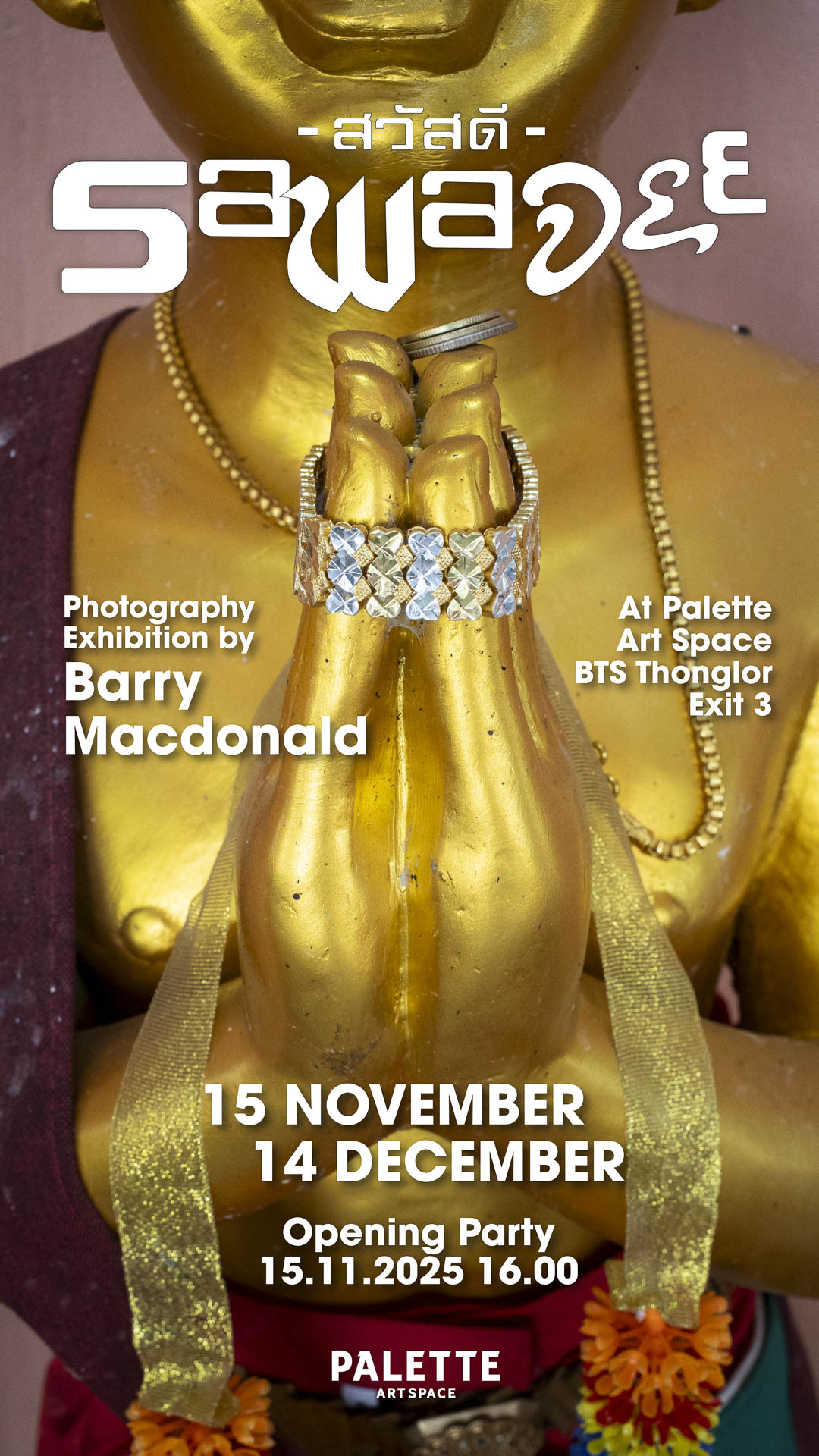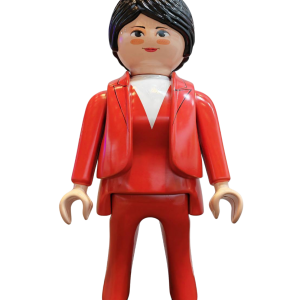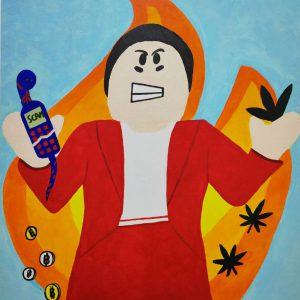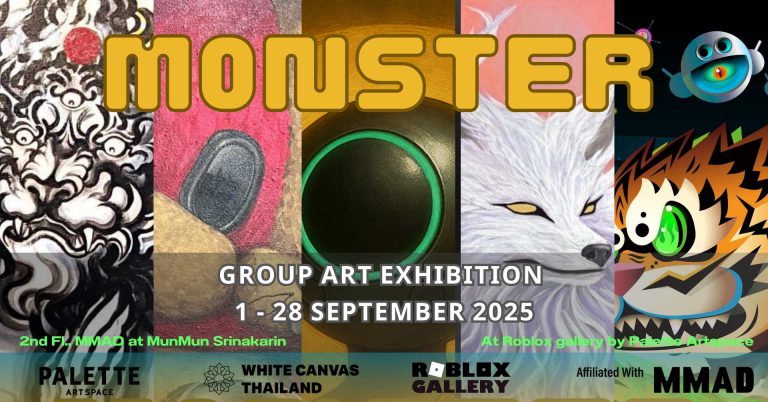”Sawadee – สวัสดี“
นิทรรศการเดี่ยว โดย แบร์รี่ แมคโดนัลด์
คิวเรต โดย โศภิรัตน์ ม่วงคำ
เปิด 15 พฤศจิกายน 2568
เวลา 16.00-21.00 น. เป็นต้นไป
ณ Palette Arts Space

“สวัสดี” และการไหว้เป็นสิ่งแรกๆ ที่นักท่องเที่ยวได้เรียนรู้เมื่อมาถึงประเทศไทย การไหว้มีต้นกำเนิดมาจากท่า “อัญชลีมุทรา” ในศาสนาฮินดูเมื่อกว่า 2000 ปี ที่แล้ว ซึ่งมาพร้อมกับคำว่า “นมัสเต” และต่อมาก็ได้ถูกนำมาปรับใช้ในพุทธศาสนาด้วยท่าอัญชลีมุทรานี้เป็นส่วนหนึ่งของการฝึกโยคะ การประกบฝ่ามือทั้งสองข้างอย่างเท่าเทียมกันเป็นสัญลักษณ์ว่าอีกฝ่ายเป็นมนุษย์ที่เท่าเทียมกัน นอกจากการทักทายแล้ว การไหว้ ยังใช้ ในการบอกลา การขอบคุณ การขอโทษ การขอความเมตตา และการแสดงความสุภาพและเคารพในรูปแบบอื่นๆ คนไทยมีลำดับชั้นทางสังคมที่เข้มงวด และการไหว้ก็เป็นศูนย์กลางในการแสดงออกถึงลำดับชั้นนี้ ในชีวิตประจำวัน การไหว้คนที่เท่าเทียมกันจะใช้การประกบฝ่ามือไว้ที่หน้าอก การไหว้ผู้ที่อาวุโสกว่าหรือผู้ที่มีตำแหน่งสูงกว่า เช่น ครูหรือเจ้านาย จะใช้การยกมือขึ้นจรดปลายคาง การไหว้พระสงฆ์ พระพุทธรูปหรือพระบรมวงศานุวงศ์ จะใช้การยกมือขึ้นจรดหน้าผากพร้อมกับก้มศีรษะลง ผู้ที่อาวุโสกว่าไม่จำเป็นต้องไหว้ ตอบผู้อายุน้อยกว่า และลูกค้าก็ไม่จำเป็นต้องไหว้ตอบพนักงานในร้านค้า การไหว้ ของอีกฝ่ายมีความหมายอย่างมากถึงวิธีที่พวกเขาเห็นคุณและใครคือผู้ที่มีบทบาทนำในความสัมพันธ์นั้น ฉันสนใจว่าท่าทางนี้ปรากฏอย่างแพร่หลายเพียงใด ไม่เพียงแต่ในบริบททางศาสนา การร่ายรำมวยไทย การแสดงโขน การนวด แต่ยังรวมถึงมาสคอตเชิงพาณิชย์ ป้ายประกาศสาธารณะ สติกเกอร์ และภาพตัดปะ ถึงแม้ว่าการไหว้จะได้รับความนิยมน้อยลงในหมู่คนรุ่นใหม่ ฉันต้องการแสดงให้เห็นว่าท่าทางนี้ได้กลายเป็นสัญลักษณ์ของความเป็นไทยในหลายระดับ
.
.
One of the first things a tourist learns in Thailand are the words “Sawadee” combined with the wai gesture. It originated over 2000 years ago in Hinduism with the Añjali Mudrā gesture, which accompanies “namaste” and was adopted by Buddhism.
It was a yogic posture, the equal meeting of the palms symbolising that the other party is treated as an equal human being. As well as greetings it’s also used for farewells, thanking, apologising, asking for mercy and expressing various forms of politeness and respect.
Thais have strict hierarchies and the wai is central in how this is acted out everyday. Greeting an equal sees your palms meet at your chest, waiing someone older or in a position of authority like your teacher or boss, sees your hands at chin height. Waiing a monk, buddha image or royalty puts your hands at your forehead with a bow of the head. Older people don’t have to return the wai of younger people and customers don’t have to return the wai of shop workers. How someone wais you has huge symbolism to how they see you, and who is in the dominant role in the relationship.
I became interested in how widespread this gesture is depicted, in religious contexts, muay Thai, Khon dance, massage, but also in commercial mascots, public notices, stickers and clip art. Despite its fading popularity with the younger generation, I want to show how this gesture has become a symbol of Thai identity on so many levels.
-
 Nine Tails Fox55,000 ฿
Nine Tails Fox55,000 ฿ -
 อัตตา (EGO)130,000 ฿
อัตตา (EGO)130,000 ฿ -
 Play & Work85,000 ฿
Play & Work85,000 ฿ -
 FLAME OF FURY15,000 ฿
FLAME OF FURY15,000 ฿ -
 MISS PM15,000 ฿
MISS PM15,000 ฿



